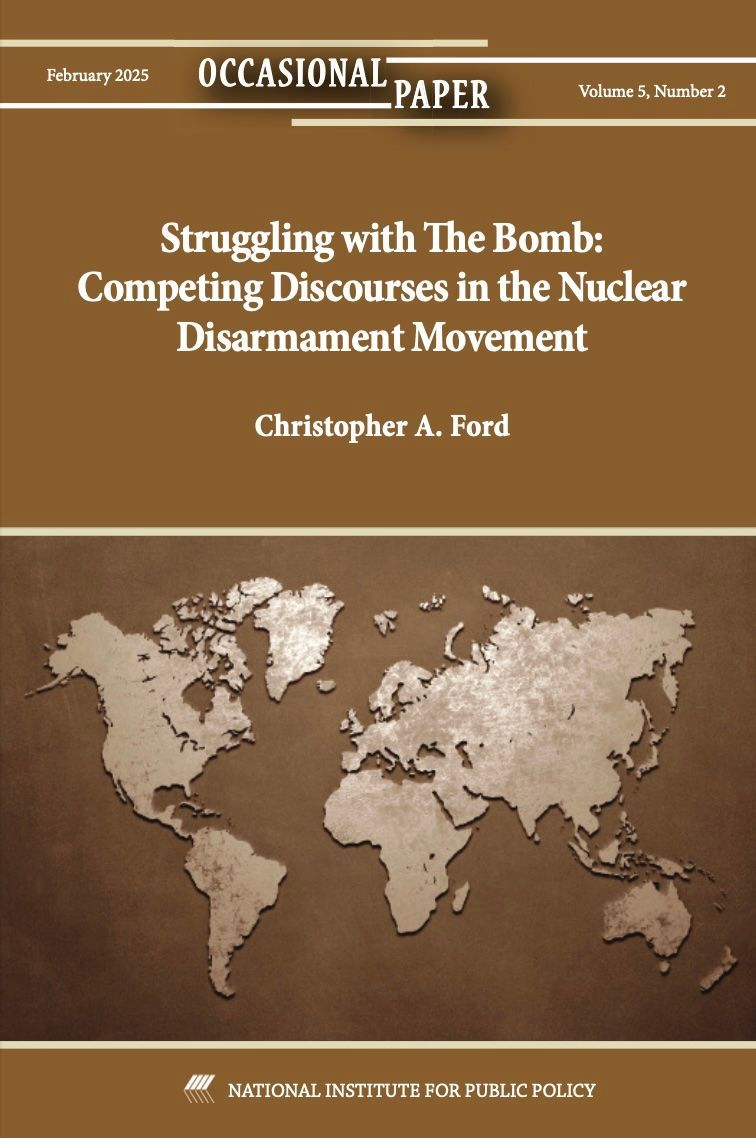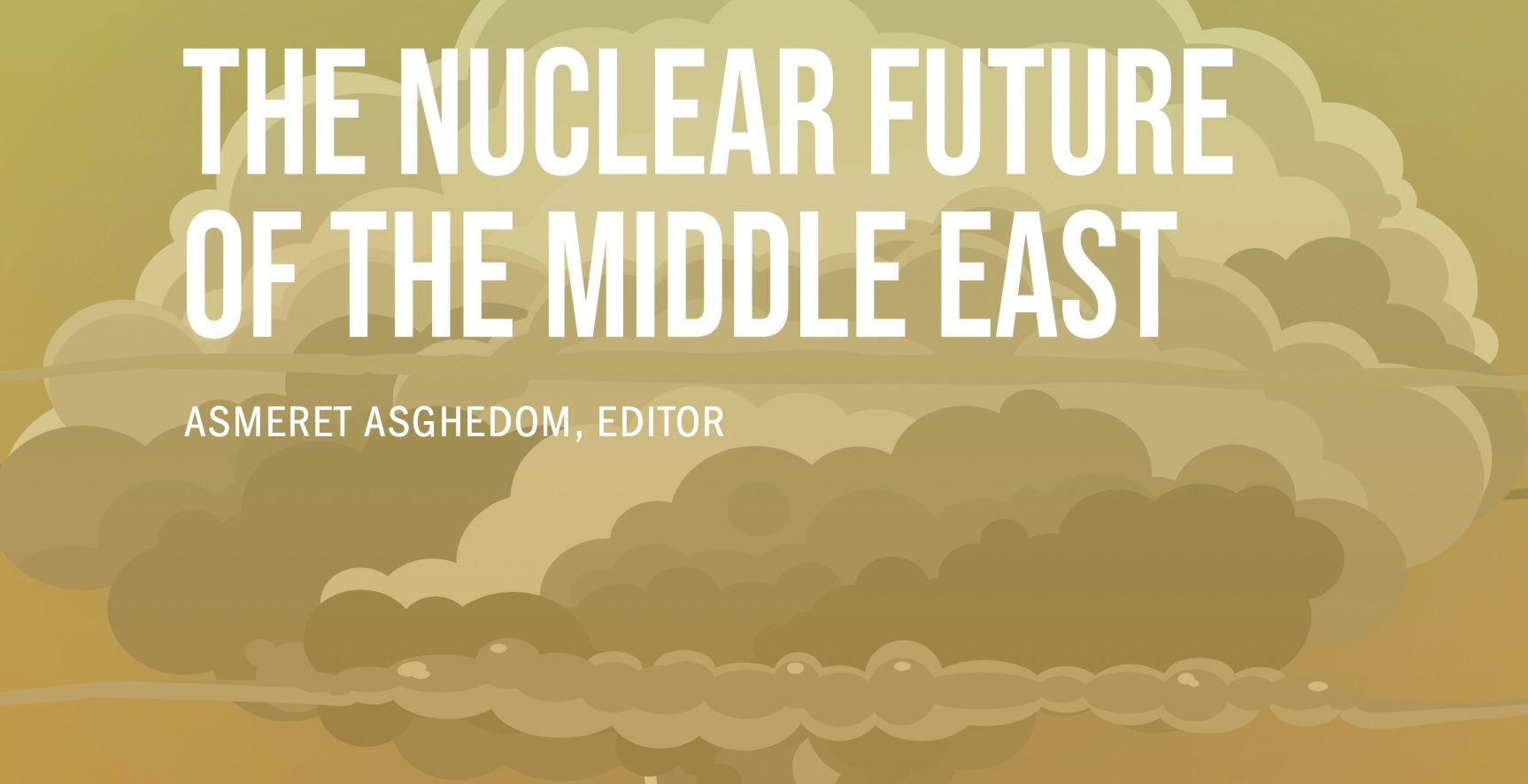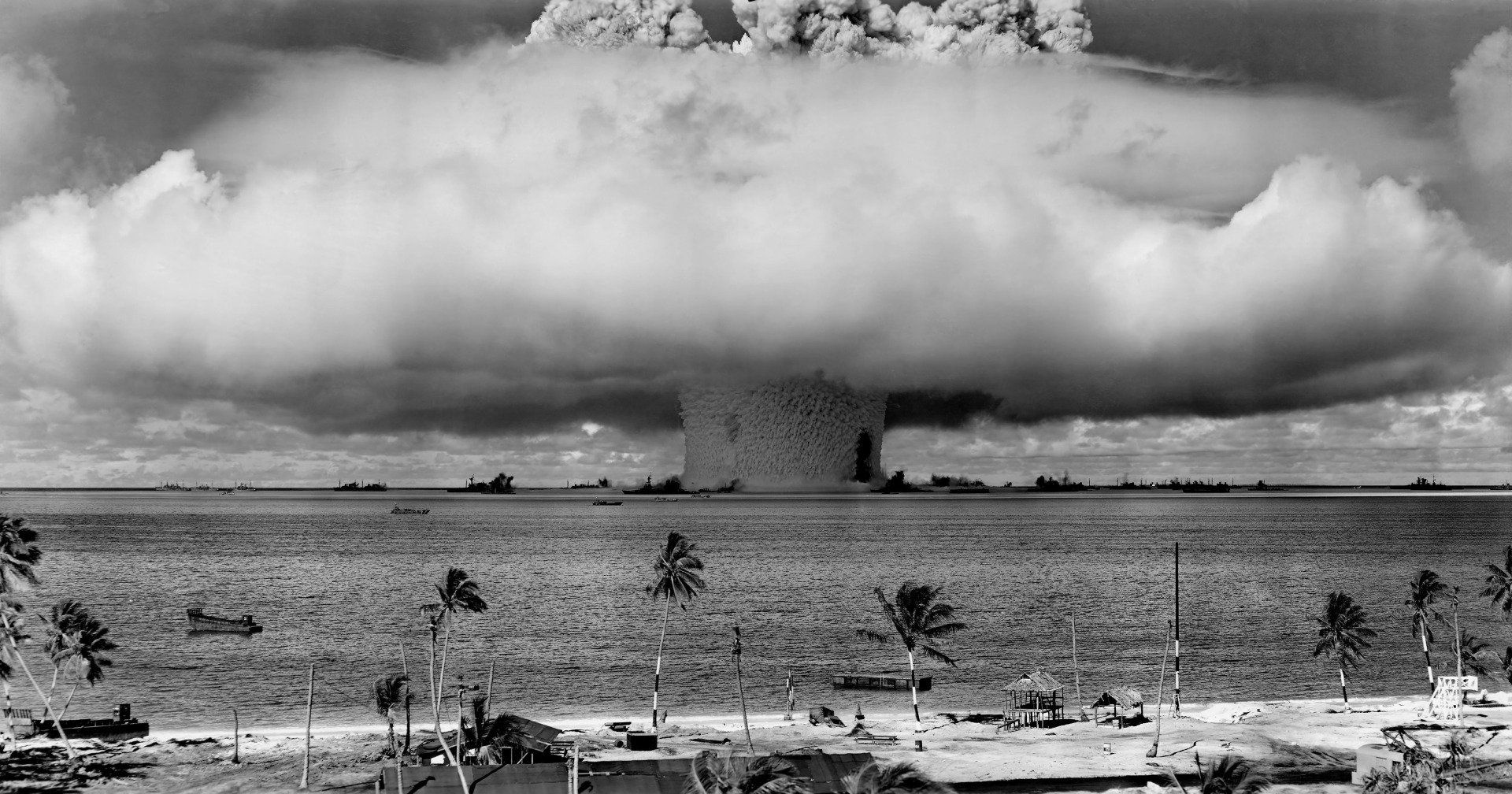Competitive Strategy in Divided Times
Note:
Below is the text of the nineteenth paper in the ACIS Papers series produced by the Office of the Under Secretary of State for Arms Control and International Security. This paper may also be found in PDF form on U.S. State Department website .
Competitive Strategy in Divided Times
by
Dr. Christopher A. Ford
Arms Control and International Security Paper Series
Volume I, Number 19
October 15, 2020
Dr. Ford participated in a workshop hosted by the University of Pennsylvania Perry World House and Brookings Institution entitled “Roadmap for Reentry in 2021 and Beyond: Advancing Institutional Commitments in a New Geostrategic Environment.” He presented this latest ACIS paper to workshop panelists and attendees.
As we approach the end of 2020, the United States finds itself at a critical juncture, confronting great-power geopolitical threats — from a dangerously “risen” People’s Republic of China (PRC) and a brazenly aggressive Russia — of a magnitude unprecedented at least since the end of the Cold War, and in some key respects quite different from anything our nation has previously faced. These threats have arisen, moreover, at a time in which our country finds itself internally divided into bitterly oppositional political tribes in ways perhaps not seen since the 19th Century.
Some might despair at this. In a polarized and divided Washington, what chance could our foreign policy and national security community have to implement consistent and effective approaches to the new environment of great power competition into which we have been thrust by decades of revisionist strategy in Beijing and Moscow?
But things may not be quite as bad as they seem. Not because those threats are not real, for alas they are. Rather, because there is probably more underlying consensus in Washington on the existence of these threats — and hence the need for resolute and sustained competitive strategy in response to them — than often meets the eye in a time of polarized tribalisms. (There is bipartisan support in the U.S. Congress for firm measures against the PRC for such things as abuses against the Uighurs of Xinjiang and other ethnic minorities , repression in Hong Kong , and technology theft , for example, while both U.S. domestic and foreign press coverage suggest that the two major U.S. presidential candidates both have a notably “tough on China” approach to foreign and national security policy. Some of the current U.S. administration’s most effective work against great power competitors, furthermore — such as in fighting technology theft and deterring foreign transactions with the Russian arms industry — owe their successes to bipartisan legislation that has given us more powerful tools with which to work.)
This is a point of which the policy community needs to be reminded, so that we can still work with each other. It is also a message that our global competitors need to hear so that they will know that an increasingly robust U.S. and broader Western competitive posture is the “new normal” with which they will have to live indefinitely – unless and until they act in ways that are less provocative, abusive, and destabilizing.
The challenge for the U.S. policy community today derives not simply from the fact that the dictatorial regimes controlling China and Russia focused, years ago, upon competitive strategies designed to destabilize the long-established “operating system” of the international community, undermine our role and influence in it, and reorient that system in various ways increasingly around themselves. The challenge also stems from the fact that while they turned to ambitious geopolitical competition in the post-Cold War era, we turned away.
I have written and spoken about this elsewhere, both in government and out of it, and won’t belabor the basic point here. The key idea is that our policy community for a long while lost touch with great power competitive strategy, or even the need for real strategy at all. Convincing themselves that the world would be, in great power terms, enduringly benign — and that our main challenges lay only in the realm of codifying and continuing humanity’s collective progress toward a happily disarmed, neoliberal end state — our national security and foreign policy leaders after the end of the Cold War largely stopped practicing strategy, our politicians stopped demanding it, our universities stopped teaching it, and our public stopped caring.
For years, to talk or think in terms of great power strategy and competition in Western countries was seen to be at best unnecessary, and more likely to be felt unfashionable, retrograde, even disreputable. Worse, even after our competitors’ destabilizing approaches became clearer, prevailing Western opinion for years often suppressed efforts to respond to such provocations on the grounds that doing so would simply make things worse: for us to talk or act in ways suggesting a competition was underway would be, as was often said in the China policy community, a “self-fulfilling prophecy.” Meanwhile, at least with respect to the PRC, for years we all but stumbled over ourselves actually to facilitate Beijing’s rise — and our companies to make short-term profits from giving it access to many of the advanced foreign technologies it has sought in service of its strategic ambitions — in a decades-long, slow-motion geopolitical enactment of Lenin’s infamous (albeit possibly apocryphal) quip about capitalists who sell the rope that will be used to hang them.
If this could be said to have been strategy of any sort, it was at best only that of the proverbial Ostrich, opting to hide its head in the sand rather than see dangers for what they are. It was certainly an approach that proved profoundly maladaptive.
Under its sway, our strategically competitive “muscles” were allowed to atrophy. It was not merely that we lost the habit of thinking competitively. Worse still, certain habits of thought we had acquired during the Cold War and did not abandon — and which in some respects were reinforced during years of U.S.-centered geopolitical “unipolarity” in the post-Cold War era — worsened the obstacles we face today in devising an effective competitive strategy.
We became too accustomed, for instance, to not truly prioritizing, which is so crucial to intelligible strategy. The last time America found itself unhappily thrust into a globally competitive relationship with a major power, we took on these challenges in an early Cold War global environment in which the U.S. economy towered over the rest of the world — both as a result of our own phenomenal dynamism and productivity, and because so much of the developed world had been devastated by the conflagration of the Second World War. In that Cold War rivalry, moreover, it turned out that our primary global competitor had hobbled itself, in economic and technological terms, by the adoption of a stultifying Marxist system of central planning. In such a context, President John F. Kennedy could speak in his inaugural address of being willing to “ pay any price, bear any burden, meet any hardship, support any friend, oppose any foe, in order to assure the survival and the success of liberty ,” and he could probably more or less mean it.
Such extravagance of vision, however — which didn’t even really work for the America of the 1960s, but which was to some extent revived, after the traumas of Vietnam and 1970s malaise, by our techno-economic triumph over Soviet Communism in the 1980s, and was reinvigorated further thereafter by our status as the post-Cold War “hyperpower” — was a luxury good that it is more difficult to afford today. We now face challenges of strategy in a context in which we cannot “have it all,” and must therefore prioritize goals and objectives, shepherd resources, and find synergies and collaborative approaches with likeminded allies, friends, and partners, both internationally and indeed within our own political system.
Doing this is made more difficult by residual mindsets that may have seemed less unreasonable when the whole world seemed to lie at our feet after the end of the Cold War, but which seem little short of madness today. As I have said before, for instance, in the nuclear weapons arena, sound policymaking must now struggle against conceptual pathologies both on the Left (where some cling to a happily eschatological teleology of inexorable progress toward “nuclear zero”) and on the Right (where some concluded from our Cold War triumph that effective arms control is unnecessary, undesirable, and in any event impossible). Both of these pathologies get things badly wrong, even as their respective moralistic obsessions with virtue-signaling and the performative aspects of nuclear policy — not to mention their demonization of any disagreement — impede thoughtful policy development and undermine the cooperation and dialogue that is needed in order not just to devise but also to sustain effective answers to the challenges we face.
As we have emphasized repeatedly, however, this administration has been working to find better answers, a middle way between such dysfunctional extremes. Since at this point a nuclear “zero” actually seems to be receding rather than approaching — thanks to the PRC and Russia both being projected to significantly increase the size of their nuclear arsenals in the years ahead — we are moving forward briskly with our own nuclear modernization in order to prevent block obsolescence of our delivery systems, and are finally beginning properly to fund upkeep of the weapons infrastructure that is also crucial to U.S. deterrence. Faced with growing threats, we have also opted to supplement our deterrent in modest ways with the lower-yield W76-2 warhead and a modernized version of the sea-launched cruise missile capability that was retired by the Obama Administration. We are not, however — and in sharp contrast to both China and Russia — adding new kinds of weapons to or seeking significantly to expand our nuclear arsenal, nor are we engaged in reckless experimentation with madcap strategic nuclear delivery systems such as Russia’s accident-prone Burevestnik “ flying Chernobyl ” nuclear-powered cruise missile or its nearly equally insane Poseidon nuclear-powered underwater drone bomb.
Similarly, while we are demonstrably willing to walk away from bad arms control agreements, and those being chronically violated by the other side, we remain committed to achieving good ones, including through negotiations with Russia (and hopefully soon China as well) to forestall a spiraling arms race by capping holdings of all nuclear weapons , led by a senior diplomat the President appointed specifically for this purpose. In response to their many provocations, we have also moved to impose unprecedented penalties and restrictions upon Russia and upon the PRC — including a broad range of new measures designed to impede Beijing’s longstanding program of acquiring foreign technology and diverting it to the People’s Liberation Army and the Chinese security services — but recognizing that our relationships with these dangerous authoritarian competitors must be in various respects both competitive and cooperative , we have also avoided full-scale economic warfare, and have continued our efforts to engage with both of these regimes where we have shared interests.
In all of these respects, our efforts will surely anger both extremes of today’s polarized policy community, but finding such a middle way is still, unquestionably, the right answer. The challenge now for the U.S. policy community is to institutionalize the contemporary world’s hard-won insight into the imperative of having a robust and effective competitive strategy, and to ensure that thoughtful firmness continues to be brought to bear in building and implementing it.
And it is in this regard, I think, that even today’s poisonously polarized U.S. political environment may yet helpfully surprise, for once one makes allowances for rhetorical tone and flavor, I believe that — as noted above — a considerable degree of policy consensus has actually developed around some core points of American strategy. There will likely now be no going back to the era of dismissive “self-fulfilling prophecy” sneers about competitive posture, no more thoughtless facilitation of a competitor’s geopolitical rise, and no more grand illusions about how we should embrace and facilitate the muscularity and empowerment of those who wish us ill because — if we just give them the chance — everyone really just wants to democratize and be our friend. Hereafter, I think, there will also be fewer naïve and arrogant assumptions that we can domesticate tyrants merely by offering our “outstretched hand” or charm dictatorial thugs by looking in their eyes to “see their soul,” and fewer delusions that challenging competitive dynamics can be “reset” by concessions and photo-ops.
Our political system, of course, will inevitably produce some degree of policy adjustment every time control shifts periodically back and forth between parties, and factions within them. Nevertheless, it is all but impossible to imagine a return, in U.S. approaches to the PRC and to Russia, to the strategic complacency and lazy hubris of the post-Cold War years. Competitive strategy, in some form or another, is here to stay — and I think there is a very good chance that our otherwise so painfully divided policy community will find common ground across those fault lines to ensure that our geopolitical competitors don’t run the global board.
I cannot guarantee this, of course, and it is always possible that such constructive possibilities will be overtaken by some short-lived triumph by one or the other of the pathologies I mentioned earlier. But I do think it likely that the enduring “new normal” in the U.S. policy community will be one notably more serious and focused upon competitive strategy than before, and this should give heart to serious people everywhere.
-- Christopher Ford








